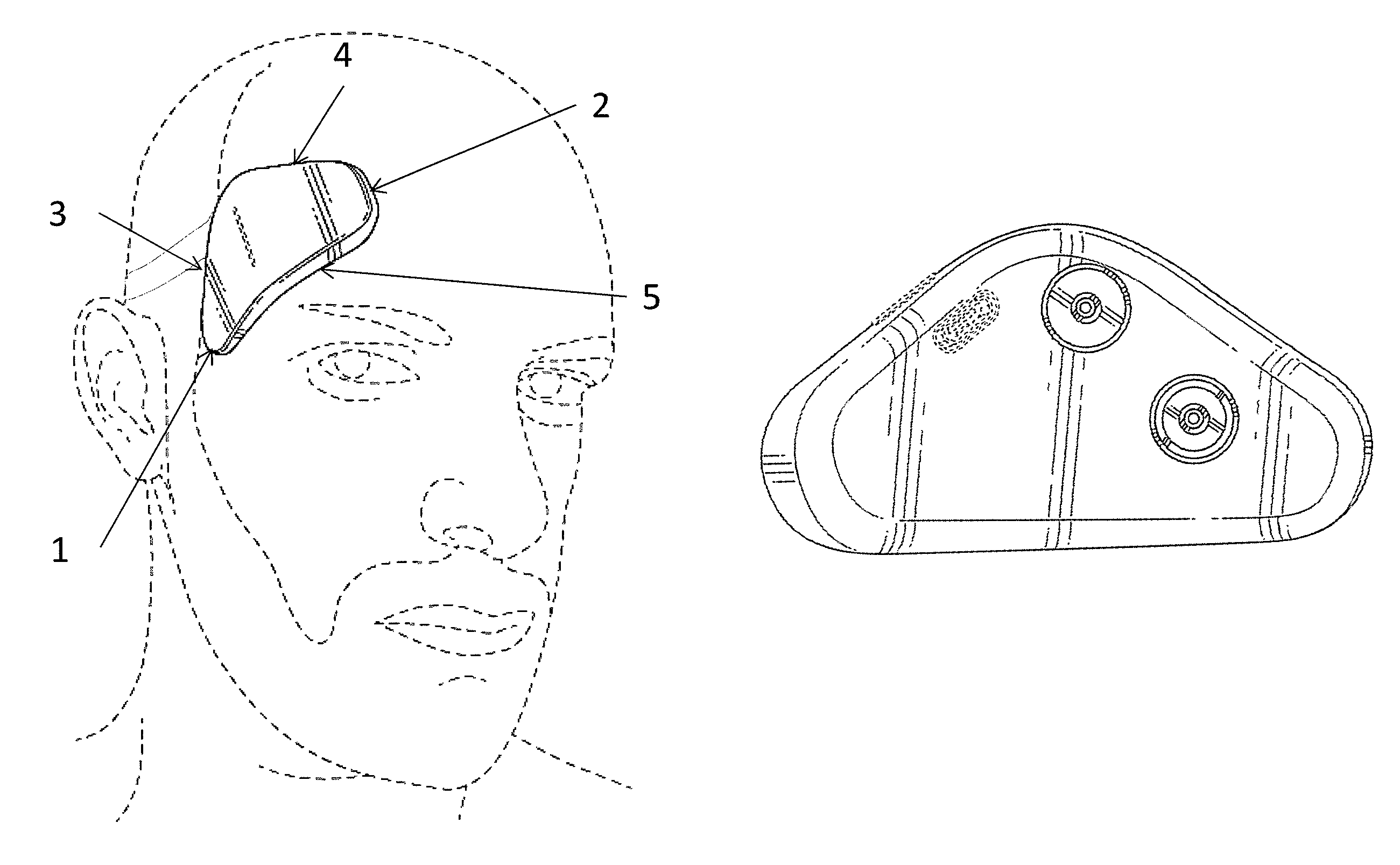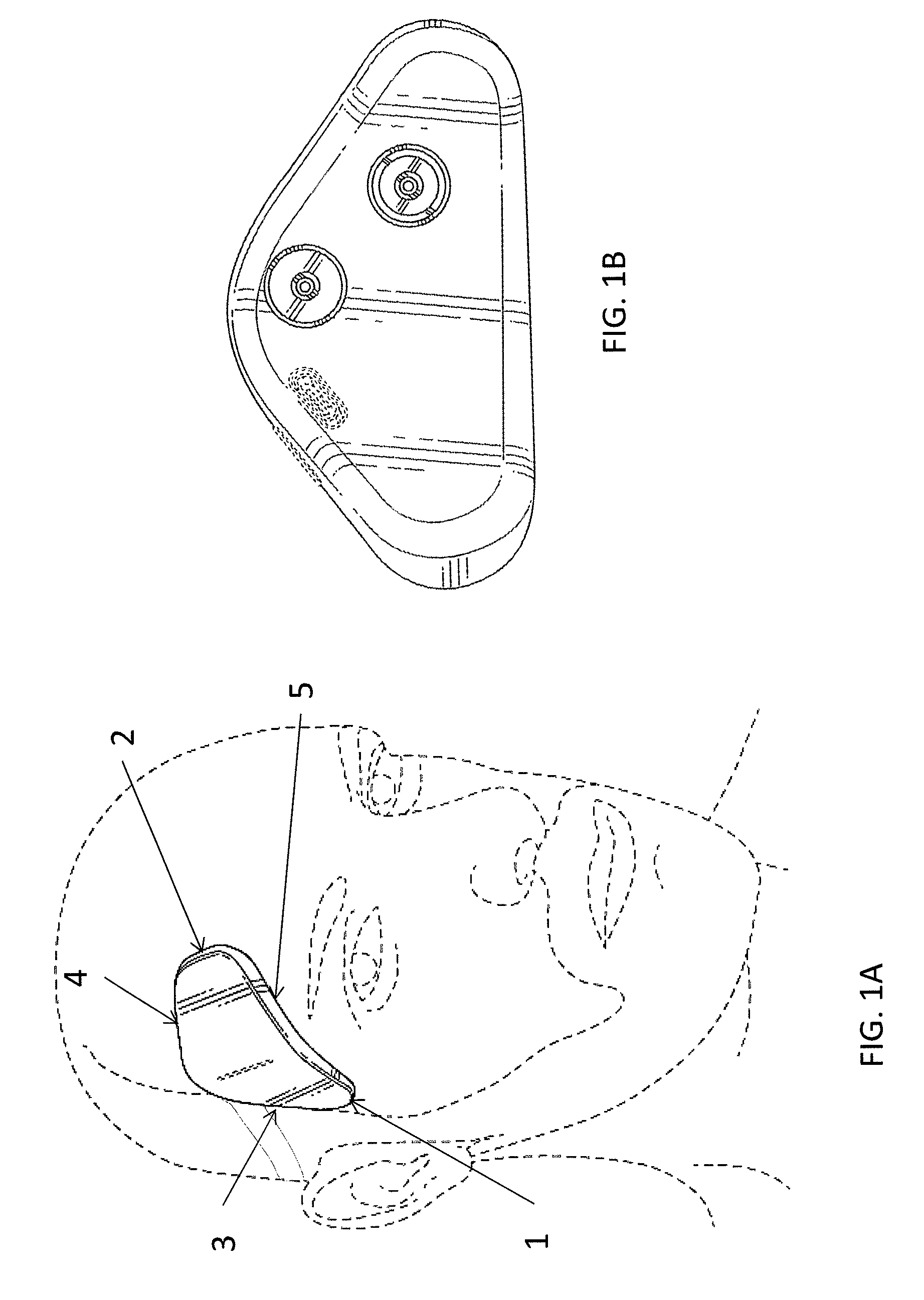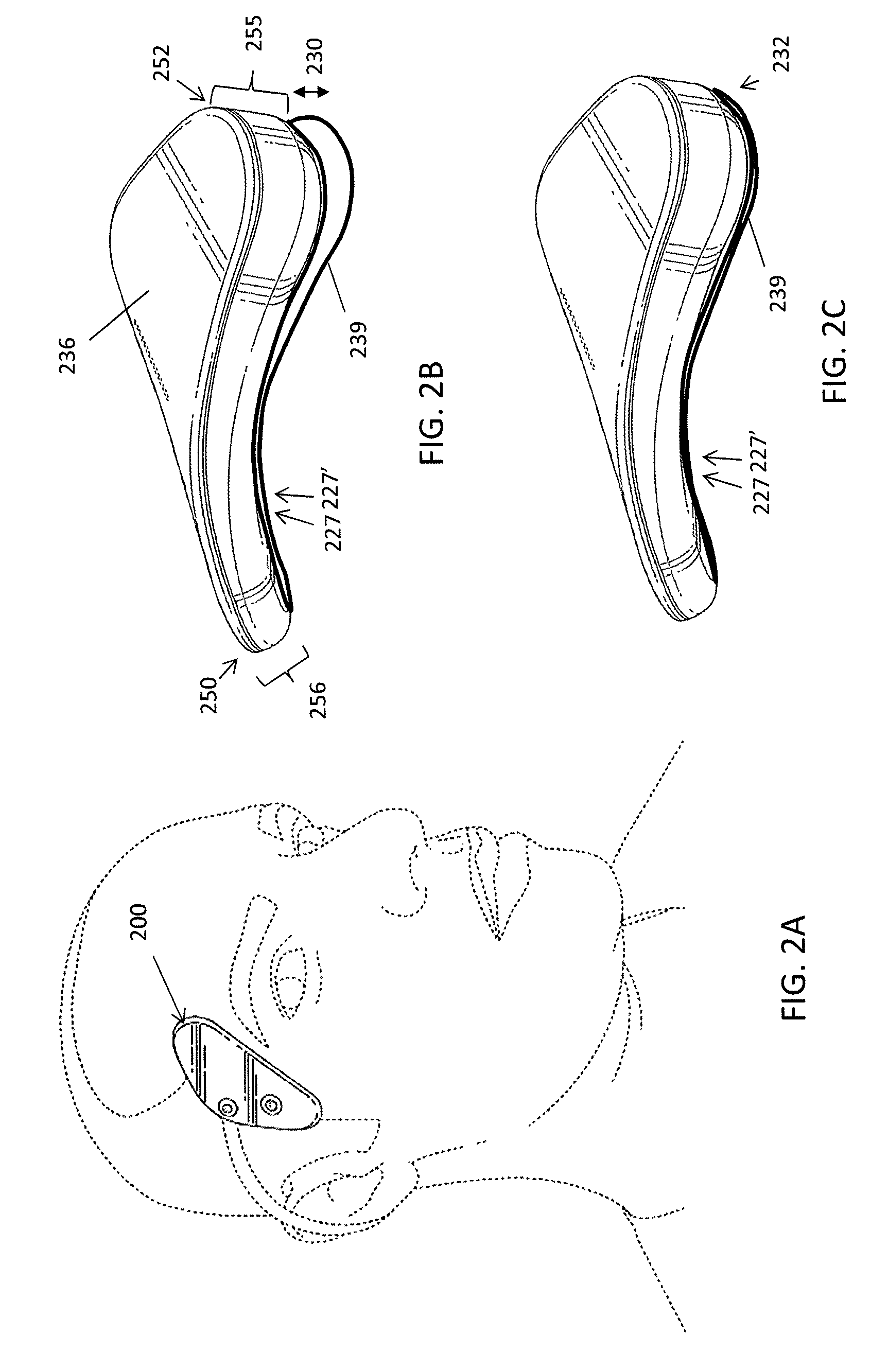Wearable transdermal neurostimulator having cantilevered attachment
a transdermal neurostimulator and cantilever technology, applied in the field of non-invasive neuromodulation, can solve the problems of ineffective, uncomfortable and easy-to-use neurostimulators, lack of neurostimulators that are effective, comfortable and easy-to-use, especially in a non-clinical (e.g., home) setting,
- Summary
- Abstract
- Description
- Claims
- Application Information
AI Technical Summary
Benefits of technology
Problems solved by technology
Method used
Image
Examples
Embodiment Construction
[0150]The following description of the various embodiments of the invention is not intended to limit the invention to these embodiments, but rather to enable any person skilled in the art to make and use this invention. Disclosed herein are methods and apparatuses, and systems for user control of neurostimulation waveforms.
[0151]Lightweight and wearable apparatuses for applying transdermal electrical stimulation and methods of using them for inducing a cognitive effect are described. These apparatuses are typically self-contained, lightweight, and wearable devices and / or systems. The lightweight and wearable transdermal electrical stimulation apparatus for inducing a cognitive effect in a subject may generally include hardware, software and / or firmware components that are configured to generate appropriate control sequences for the device, transmit signals to a current or voltage source and / or conditioner, and connect to electrodes that are configured to be placed on a user for gene...
PUM
 Login to View More
Login to View More Abstract
Description
Claims
Application Information
 Login to View More
Login to View More - R&D
- Intellectual Property
- Life Sciences
- Materials
- Tech Scout
- Unparalleled Data Quality
- Higher Quality Content
- 60% Fewer Hallucinations
Browse by: Latest US Patents, China's latest patents, Technical Efficacy Thesaurus, Application Domain, Technology Topic, Popular Technical Reports.
© 2025 PatSnap. All rights reserved.Legal|Privacy policy|Modern Slavery Act Transparency Statement|Sitemap|About US| Contact US: help@patsnap.com



